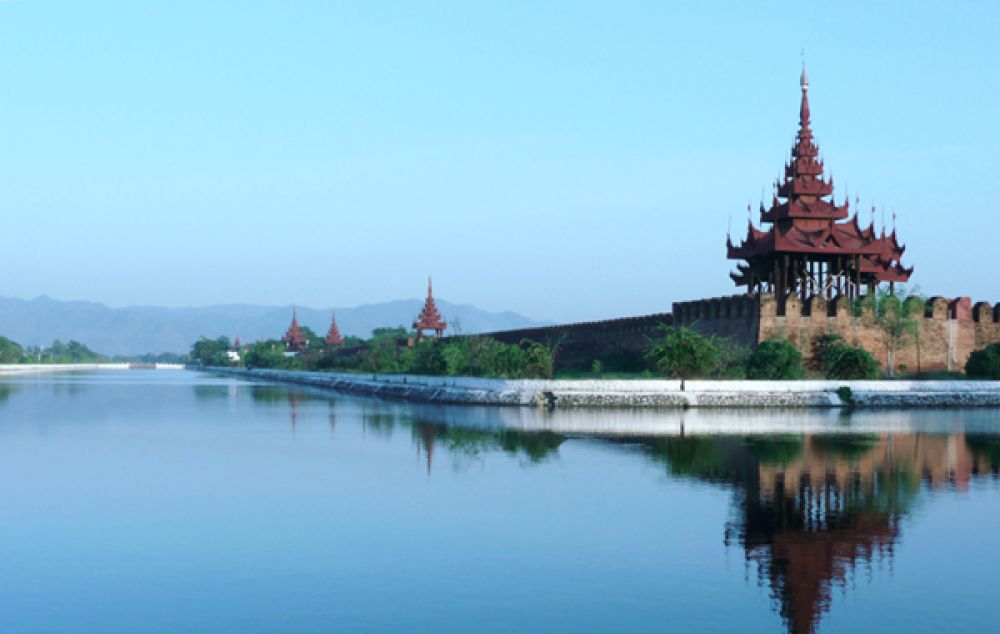

The Mandalay Palace, known as the last royal palace of the Burmese monarchy, is located in Mandalay, Myanmar. It was constructed between 1857 and 1859 as part of King Mindon's founding of the new royal capital city of Mandalay. The palace was the primary residence of King Mindon and later, his son King Thibaw, until the British annexed Upper Burma in 1885 following the Third Anglo-Burmese War.
During World War II, the palace complex was heavily damaged by bombing. In the years that followed, the palace grounds were used by the British as a military camp. It wasn’t until the Myanmar government initiated a reconstruction project in the 1990s that the palace was partly restored to its former glory.
The reconstruction efforts turned what remained and what could be salvaged from the once majestic palace into a historical point of interest that attracts tourists worldwide. The modern replica of the palace, albeit somewhat controversial in terms of historical accuracy, allows visitors to glimpse the grandeur of Burma's royal past. The palace’s grand architecture, large moat, and well-manicured gardens are principal appeals for visitors looking to immerse themselves in the country’s history.
Accessibility to the palace has greatly improved over the years, with tourist-friendly facilities and guided tours available in various languages to accommodate international tourists. The site features the Cultural Museum and the Mini Museum, where artifacts and replicas of the regalia are on display, offering tourists educational insights into Burmese royal heritage.
Recent trends in tourism at Mandalay Palace indicate a growing interest in cultural and historical exploration. Travelers are increasingly seeking authentic experiences that allow them to understand the traditions and lifestyles of the countries they visit. There has been a noticeable rise in cultural events, such as performances and exhibitions, organized within the palace grounds to offer a richer experience to visitors.
Sustainable tourism is another trend that is influencing the Mandalay Palace visitor experience. Efforts are being made to preserve the site through better crowd management practices and the application of environmentally friendly policies, which are designed to ensure that tourism does not adversely affect the palace’s structural integrity or its surrounding environment.
Thanks to the rise of digital and social media, interest in Mandalay Palace has been further boosted by travel blogs, online reviews, and shared travel experiences, bringing the site to the attention of a global audience and inspiring a steady stream of international travelers eager to explore Myanmar's historical gems.
With its illustrious history and ongoing appeal, Mandalay Palace remains a must-visit destination for those touring Myanmar. Visitors should be prepared for the tropical climate and respect local customs when visiting the site. The palace is typically open daily, with entry fees applicable for foreign tourists.
For a deeper appreciation, visitors are encouraged to engage with licensed guides, who can provide detailed background information and stories about the palace that truly enhance the visitor experience. Whether you are a history buff, a cultural enthusiast, or simply seeking to discover the beauty of Myanmar, Mandalay Palace offers a journey into the heart of the country's royal heritage.